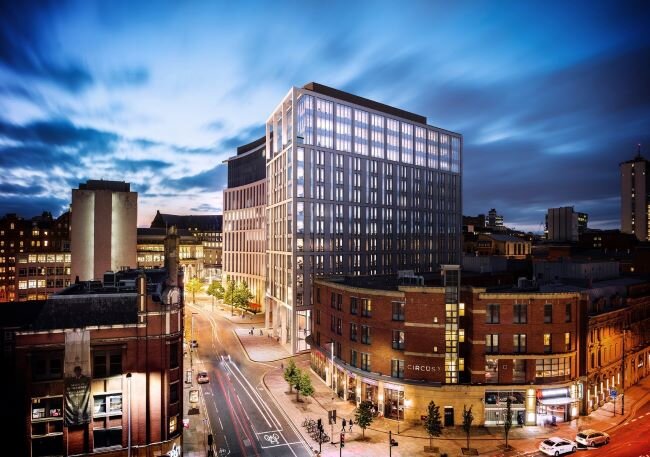As businesses become more agile, they tend to demand less space per employee. Should landlords be worried?
Ask Development’s No.8 at First Street in Manchester
With 150 employees housed in its 15,000 sq.ft. regional office in the heart of Manchester’s traditional CBD, Willis Towers Watson conform perfectly to the property industry’s benchmark allocation of 1 person per 100 square feet. However, as we have witnessed with other occupiers in recent years, Willis are learning how to use their space more efficiently. Consequently, its next office will be significantly smaller than its existing one despite it having to house at least the same number of staff.
Willis Towers Watson recently agreed to lease 11,590 sq.ft. at Ask Development’s No.8 at First Street in Manchester which it will move in to later in 2020. Its’ new office is 25% smaller than its current 15,457 sq.ft. suite on the fourth floor of Belvedere House. Surely, this spells bad news for landlords?
The newly developed Landmark office building on Peter Street in Manchester.
It is a similar story for global property consultants JLL which will shortly be moving its Manchester office to the 10th floor of the new Landmark office building. Its new suite measures 13,896 sq.ft. which is 15% smaller than its existing space at Piccadilly Gardens (16,365 sq.ft.).
So, what are the implications for office developers if tenants are demanding physically less space? Does it mean there will be swathes of new office space left empty and fewer new buildings being built? Will rents fall as a result of there being less demand?
Well, the answer is far from straightforward. Sure, in general terms, less space is being demanded per individual office worker. However, the way that office space is being used is changing and fast.
Agile working is causing developers to re-think office design. For example, they are now having to provide collaboration space within the common areas. Coffee shops and meeting pods are becoming a standard feature of office receptions. At the same time, average lease lengths are becoming shorter. Tenants are therefore less willing to invest in their own kitchens and meeting rooms. These facilities are increasingly being provided by the developer within the common areas.
It is true that tenants in multi-let buildings are occupying less net useable space per employee than they did previously. However, because developers are having to provide more overall gross floor area in order to accommodate all the extra facilities which now also include things like bike hubs and Amazon parcel lockers, rents are tending to rise faster than inflation on a rate per square foot basis.
Because tenants are occupying less physical space, they are tending to accept that rents quoted on a net basis should be higher to reflect the additional facilities being provided within the common areas. Afterall, what matters to most tenants is that the working environment matches the aspirations of their most important business asset. In other words, their staff.
The net result. You pays your money and you takes your choice.
If you would like advice on an office relocation either in Manchester or elsewhere in the UK, please call Martyn Markland on 0161 457 1422 or email him at mm@tenantag.co.uk.


